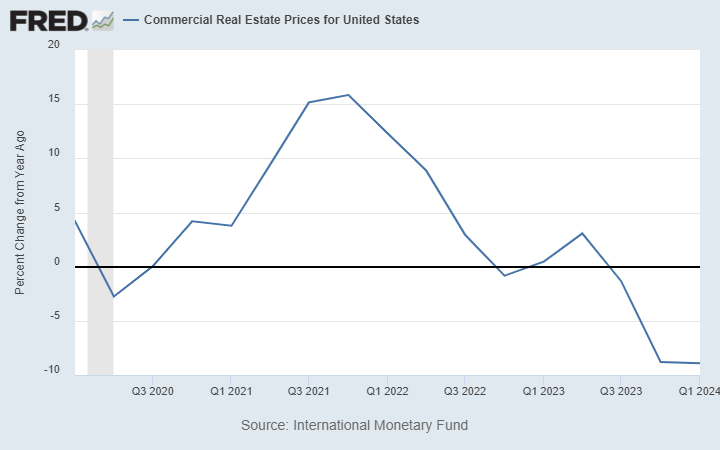The Starlink Skyway
This post The Starlink Skyway appeared first on Daily Reckoning.
As I look out the window of my new study, I thank the Good Lord I can live in the middle of rural Italy and still do my job.
My parents are downstairs watching television, while my wife just made me a fantastic lunch. My son, Micah, is at school, and we’ll pick him up shortly.
It’s truffle season here in Il Piemonte, and I’ve already sampled the goods. Since the weather has cooled, we lit up my fireplace for the first time this autumn.
My best friend from graduate school visited the other night as he was driving through France and Italy. We had plenty of room at the inn.
I thought this would be possible, but thanks to idiotic planning, Telecom Italia put the fiber optic cable on the wrong side of the street. That means my neighbor’s cows have broadband internet access, but I don’t.
So, I had to consider an alternative that I had thought would be prohibitively expensive: Elon Musk’s Starlink.
It’s simply the best thing that’s happened to my career since I’ve been in Italy. Elon’s satellite dish currently sits in my yard – yes, it’ll be on the roof soon – sending the signal from his satellites to my computer.
That means I can have my cake and eat it, too. I can live in my happy place and do the work I love doing.
While I’m thrilled at my luck, Starlink’s arrival really solidifies the movement out of cities and a monumental shift in global connectivity. Starlink is reliable, affordable, high-speed internet access that works anywhere. It’s a game-changer for individuals and businesses, particularly in rural and remote areas.
Looking at the bigger picture, Starlink fosters a “dispersion expansion”—a trend where individuals and families relocate from crowded and expensive urban centers to more dispersed, often rural areas. This shift carries enormous implications for infrastructure, real estate, and the economy, marking the beginning of what I call The Starlink Skyway.
The Promise of Satellite Internet: Democratizing Connectivity
Satellite internet, led by Starlink, OneWeb, and Amazon’s Project Kuiper, provides high-speed internet access by deploying a low-Earth orbit (LEO) satellite network. These satellites are closer to Earth than traditional satellites, which reduces latency (the delay before a data transfer) and improves internet speeds. Thanks to this, satellite internet has made broadband accessible to areas that previously had limited or no access, like mine.
The impact of this access is profound. By extending reliable internet services to underserved communities, satellite internet connectivity becomes available to all. This means people in rural or remote areas can now participate in the digital economy, access information, and engage in remote work opportunities, giving them new possibilities and a brighter future.
In many cases, the appeal of leaving congested cities for quieter, less expensive areas becomes viable and desirable because the necessity of being near urban infrastructure has diminished.

Commercial real estate has been on a downtrend since Q4 2021. We don’t need as much of it anymore.
Remote Work and the New Dispersion Expansion
The COVID-19 pandemic’s government-mandated private sector shutdown accelerated remote work trends, and satellite internet further solidified them by expanding connectivity options. With Starlink and other services ensuring reliable internet, employees and employers are reconsidering the need for physical presence in densely populated cities. The aforementioned “dispersion expansion” shift reshapes real estate markets and local economies, particularly in suburban and rural areas.
People are migrating from urban centers for affordability, space, and a better quality of life. Smaller towns and rural regions, previously limited by weak internet infrastructure, are becoming attractive options. This migration influences local economies in two ways:
Increased Local Spending: As new residents bring income and spending power, they fuel local businesses and service industries.
Real Estate Boom: Housing markets in non-urban areas are experiencing growth as demand increases, driving up property values and creating development opportunities.
Economic Implications of The Starlink Skyway
The economic effects of this shift are multifaceted. As people disperse, demand increases for infrastructure investments to support these new regional hubs. The need for expanded road networks, energy grids, and utilities grows as populations spread out. This infrastructural boom isn’t limited to traditional assets; the need for renewable energy, smart grids, and upgraded digital infrastructure drives demand for metals and other hard assets essential for modern infrastructure.
As rural areas develop, there’s a renewed need for hard assets like metals, which are crucial for building infrastructure. Copper, for instance, is vital for electrical wiring and telecommunications, while lithium and cobalt are essential for batteries and renewable energy systems. These materials become indispensable as dispersed areas modernize and integrate with a greener, tech-enabled economy.
As the new infrastructure expands, so do employment opportunities in construction, telecommunications, and tech industries. These jobs are not limited to installation and maintenance but also include roles in engineering, planning, and digital technology that grow and sustain these new networks.
With more people and businesses relocating to less densely populated areas, rural economies, which have historically faced stagnation, are experiencing a revival. Increased tax revenues from new residents fund public services like schools and healthcare, enhancing the quality of life and making these areas even more attractive.
The Starlink Skyway’s Challenges
While the Starlink Skyway grants numerous benefits, it also brings challenges. The sudden influx of residents into rural areas strains existing infrastructure. Additionally, questions arise regarding the satellites’ sustainability and the long-term implications of relying on space-based infrastructure.
The increased infrastructure to accommodate dispersed populations has environmental implications, from habitat disruption to increased energy consumption. Furthermore, the production and deployment of thousands of satellites are raising concerns about space debris and the ecological footprint of satellite manufacturing and launches.
Rapid population growth in rural areas will lead to short-term overburdened resources and services, such as water supply, healthcare, and schools. Policymakers and planners must anticipate and manage these pressures to ensure smooth development.
While satellite internet has the potential to close the digital divide, access to these services is only sometimes affordable. For lower-income populations, the cost of satellite internet could still be a barrier, leaving gaps in connectivity. I currently pay 40 euros per month for Starlink and initially paid 225 euros for the equipment. Over time, the price should decrease for families with trouble making that payment.
The Future of Work, Living, and Wealth Distribution
As more people live and work remotely, the traditional notion of wealth being concentrated in cities is shifting. Investment opportunities are emerging in rural real estate, infrastructure development, and the metals essential for these projects.
As prosperity spreads to new areas, traditional economic hubs like New York, London, and Tokyo may no longer be the sole wealth centers. This diversification helps buffer against regional economic downturns by spreading economic activity more broadly.
The dispersion effect also leads to a rise in regional entrepreneurship. As new residents bring skills and capital to rural areas, they create businesses that cater to local needs, further driving economic growth.
As infrastructure builds up, so does the value of hard assets. Investors who recognize the significance of metals and minerals in this new infrastructure are well-positioned to benefit. Furthermore, the push for renewable energy solutions in dispersed areas emphasizes the need for lithium, cobalt, and other metals, which will continue to be critical.
Wrap Up
The Starlink Skyway is more than just improved internet connectivity. It’s an economic and societal shift that redefines where and how we live, work, and invest.
Satellite internet fosters a new era of economic growth and opportunity by enabling people to move away from cities and thrive in more dispersed areas. This opens up substantial investment opportunities and is one of the main reasons we’re so bullish on precious and base metals.
As we look to the future, it’s clear that the Starlink Skyway will continue to influence society’s evolution, spreading prosperity to new regions and challenging old paradigms. Understanding and harnessing this effect will be crucial for investors, entrepreneurs, and policymakers to navigate the changing political and economic landscape.
The post The Starlink Skyway appeared first on Daily Reckoning.
This story originally appeared in the Daily Reckoning
Source: https://dailyreckoning.com/the-starlink-skyway/
Anyone can join.
Anyone can contribute.
Anyone can become informed about their world.
"United We Stand" Click Here To Create Your Personal Citizen Journalist Account Today, Be Sure To Invite Your Friends.
Before It’s News® is a community of individuals who report on what’s going on around them, from all around the world. Anyone can join. Anyone can contribute. Anyone can become informed about their world. "United We Stand" Click Here To Create Your Personal Citizen Journalist Account Today, Be Sure To Invite Your Friends.
LION'S MANE PRODUCT
Try Our Lion’s Mane WHOLE MIND Nootropic Blend 60 Capsules
Mushrooms are having a moment. One fabulous fungus in particular, lion’s mane, may help improve memory, depression and anxiety symptoms. They are also an excellent source of nutrients that show promise as a therapy for dementia, and other neurodegenerative diseases. If you’re living with anxiety or depression, you may be curious about all the therapy options out there — including the natural ones.Our Lion’s Mane WHOLE MIND Nootropic Blend has been formulated to utilize the potency of Lion’s mane but also include the benefits of four other Highly Beneficial Mushrooms. Synergistically, they work together to Build your health through improving cognitive function and immunity regardless of your age. Our Nootropic not only improves your Cognitive Function and Activates your Immune System, but it benefits growth of Essential Gut Flora, further enhancing your Vitality.
Our Formula includes: Lion’s Mane Mushrooms which Increase Brain Power through nerve growth, lessen anxiety, reduce depression, and improve concentration. Its an excellent adaptogen, promotes sleep and improves immunity. Shiitake Mushrooms which Fight cancer cells and infectious disease, boost the immune system, promotes brain function, and serves as a source of B vitamins. Maitake Mushrooms which regulate blood sugar levels of diabetics, reduce hypertension and boosts the immune system. Reishi Mushrooms which Fight inflammation, liver disease, fatigue, tumor growth and cancer. They Improve skin disorders and soothes digestive problems, stomach ulcers and leaky gut syndrome. Chaga Mushrooms which have anti-aging effects, boost immune function, improve stamina and athletic performance, even act as a natural aphrodisiac, fighting diabetes and improving liver function. Try Our Lion’s Mane WHOLE MIND Nootropic Blend 60 Capsules Today. Be 100% Satisfied or Receive a Full Money Back Guarantee. Order Yours Today by Following This Link.






